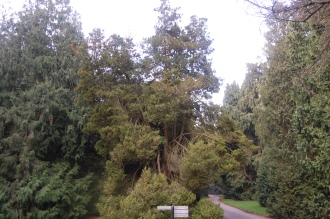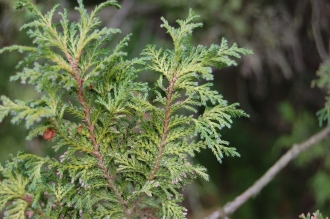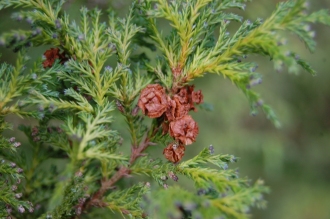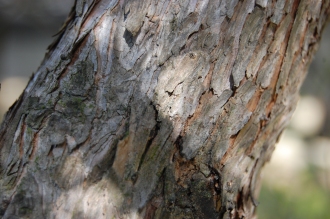Position: Full sun to light shade
Flowering period: Spring
Soil: Moist, well drained
Eventual Height: 30m
Eventual Spread: 10m
Hardiness: 4a, 4b, 5a, 5b, 6a, 6b, 7a, 7b, 8a, 8b
Family: Cupressaceae
Chamaecyparis pisifera is a slow growing evergreen coniferous tree with a conical habit. Its dark green leaves are arranged in flat, spreading sprays. Its adult leaves are scale like and up to 2mm long. Its juvenile leaves are needle like and up to 8mm long. Its trunk may achieve a diameter of up to 2m. Its red/ brown bark is vertically fissures. Its flowers are in the form of male pollen cones and female juvenile cones. Its fruit are globose cones and up to 8mm across.
Chamaecyparis pisifera, commonly known as Sawara Cypress or Sawara, is native to central and southern Japan.
The etymological root of the binomial name Chamaecyparis is derived from the Greek chamea meaning ’dwarf’ and kupeiros the ancient Greek name for the Cypress (ironically this is not a dwarf tree). Pisifera is derived from the Latin pisi meaning ‘pea’ and fero meaning ‘to bear’.
The landscape architect may find Chamaecyparis pisifera useful as an attractive evergreen specimen suitable for planting in parks.
Ecologically, Chamaecyparis pisifera is of little value to UK wildlife.
Chamaecyparis pisifera prefers moist, fertile, well-drained soils. It tolerates most pH of soil, although it prefers a slightly acidic soil.









Leave a comment